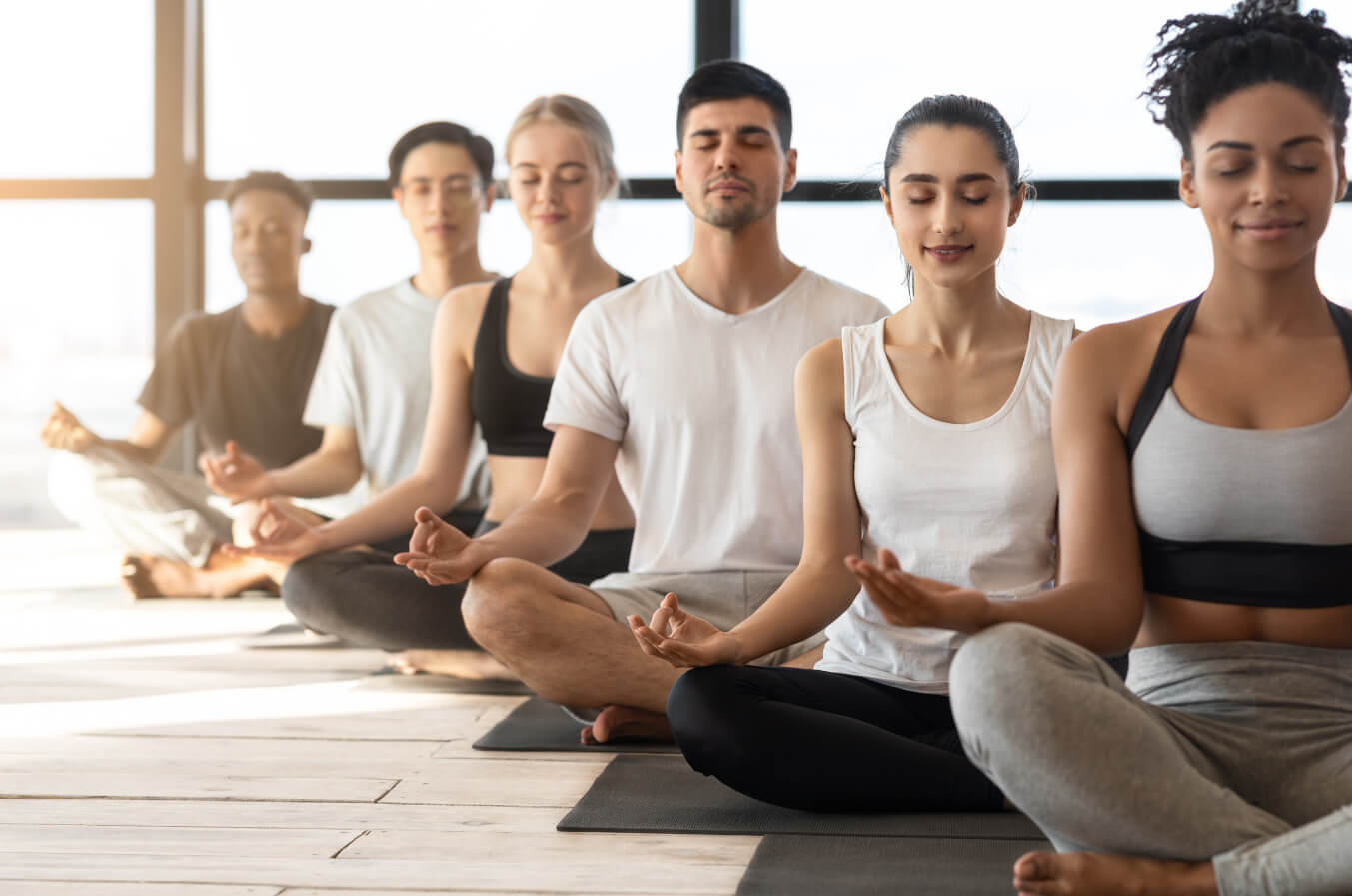
Zen for Beginners: How to Meditate
Are you feeling stressed out and overwhelmed lately? Are you looking for a way to relax and find some inner peace? Well, look no further than meditation! Meditation is a simple, yet effective way to calm your mind and improve your overall well-being. And the best part? Anyone can do it!
Now, I know what you’re thinking. “Meditation? That sounds like something others do but not me.” Or perhaps, “I’ve never been able to do it right.” Trust me, meditation is for everyone! And if I can do it, so can you. You don’t need any special equipment or training to get started. All you need is a quiet space and a few minutes of your time. And who couldn’t use a few minutes of peace and quiet these days? So, put down your phone, turn off the TV, and let’s get started!
Beginner Meditation: Some Options
The benefits of meditation are endless. I know that being a beginner and getting started with meditation can be intimidating. I guarantee you can learn how to meditate. Here are some things to consider when getting started.
Finding Your Inner Buddha
First things first, let’s talk about finding your inner Buddha. You know, that calm, serene, and wise part of yourself that’s always there, even when life gets hectic. Finding your inner Buddha doesn’t mean you have to be serious all the time. In fact, sometimes it’s better to find your inner comedian.
Tickling Your Funny Bone with Mindfulness
Meditation can actually be funny! No, really. Mindfulness meditation encourages us to be present in the moment and observe our thoughts without judgment. This can lead to some pretty hilarious realizations about ourselves. I’ve caught ourselves thinking things like “Why am I worrying about what my neighbor’s think about my holidays lights still being up in February?” or “I really need to stop humming ‘Zoot Suit Riot’ in my head all day.” It’s a great way to bring some levity to your day and remind yourself not to take everything so seriously.
Laughter Yoga: Meditation’s Jolly Cousin
If you’re looking for a more active way to incorporate meditation into your life, try laughter yoga (not necessarily related to Active Meditation). Yes, you read that right, laughter yoga. It’s a practice that combines deep breathing and laughter to decrease stress and increase joy. It may feel silly at first, but trust me, it’s contagious. Plus, laughter has been shown to have numerous health benefits, like boosting the immune system and reducing pain. So, go ahead and give it a try. You might just end up laughing your way to a more peaceful state of mind.
Bottom line, meditation doesn’t have to be a chore. It can be a fun and lighthearted way to improve your mental and physical health. So, why not give it a try? Who knows, you might just surprise yourself with how much you enjoy it.
The Art of Not Thinking…or Trying Not To
One of the biggest misconceptions about meditation is that you have to stop thinking (along with a few others listed here). I’m here to tell you that it’s not true. Trying to stop thinking is like trying to stop your heart from beating. It’s not going to happen. Instead, the goal of meditation is to observe your thoughts without judgment.
When you sit down to meditate, your mind will wander. That’s okay. When you notice that your mind has wandered, gently return your attention to your breath. Don’t get frustrated with yourself. Just notice your mind wandering and gently bring it back to your breath. It’s like training a puppy. You don’t get mad at the puppy for wandering off. You gently bring it back to where it’s supposed to be.
This basic meditation is a great way to improve focus and get connected with your inner self. I personally was not able to successfully meditate until I discovered the guided meditations on the free meditation app Insight Timer. I encourage you to explore the best way to help you relax and accept your thoughts. Remember, the purpose of meditation is not to stop thinking. Ultimately, it is to observe your thoughts and feelings without judgment.
Types of Meditation
As I’ve already mentioned, meditation is a powerful tool that can help us reduce stress, achieve inner peace and much more. With so many different meditation techniques out there, it can be hard to know where to start. Here are a few popular types to help you start meditating.
Mindfulness Meditation
Mindfulness meditation is all about being present in the moment. You focus your attention to your thoughts and emotions, while staying present as you inhale and exhale. This type of meditation can help you become more aware of being in the present moment, and can help you develop a greater sense of calm and relaxation.
To get started with this way to meditate, find a quiet place where you can sit comfortably with your eyes closed. Set a time to meditate, say 2-5 minutes to start. Stay focused on your breath as you inhale and exhale. If your mind starts to wander, simply refocus on your breath. As you progress, you can add a body scan meditation in which your attention is directed at various areas of the body and noting body sensations that happen in that part of the body in the present moment.
Transcendental Meditation: Floating on Cloud Nine
Transcendental Meditation (TM) is a popular type of meditation that involves the use of a mantra – a word or phrase that you silently repeat to yourself as you meditate. The goal of TM is to reach a state of deep relaxation and inner peace, and many people who practice TM report feeling like they are “floating on a cloud” during their meditation sessions.
To practice TM, find a quiet place where you can sit still with your eyes closed. Choose an affirmation that resonates with you, and repeat it silently to yourself as you meditate. If your mind starts to wander, simply bring your attention back to your affirmation.
Active Meditation: Walking Stress Away
Active meditation is a powerful practice that I love and practice almost everyday with a walking meditation.
Unlike more traditional forms of meditation, active meditation involves movement or physical activity, which can make it easier to get into a meditative state and stay focused. I mentioned above, you can walk OR swim, do yoga, garden, clean house, dance, cycle, etc. The list is endless since you get to pick what works best for you.
That’s it for now! These are just a few of the many types of meditation available and each one has its own unique benefits. Try a few and find which one works best for you.
Common Meditation Challenges
Meditation is a simple practice that can bring us many benefits but, like any new habit, it can be challenging to get started. Here are some common meditation challenges you may face and how to overcome them.
When Your Monkey Mind Has a Sense of Humor
Our minds are naturally curious and tend to wander. This can be especially challenging when we’re trying to meditate. We may find ourselves thinking about our to-do list, replaying past conversations, or daydreaming about the future. When this happens, it’s easy to get frustrated and feel like we’re failing at meditation.
Instead of getting upset, approach your monkey mind with a sense of humor. Acknowledge your thoughts and gently guide your attention back to the breath or affirmation. And remember, observe your thoughts as if you were watching clouds pass by in the sky.
Laughing at Distractions
Another common challenge in meditation is dealing with distractions. You may hear a car honking outside, a dog barking, or a family member talking in the next room. These external distractions can be frustrating and make it difficult to focus.
Instead of getting annoyed, smile and laugh at the distractions. Remind yourself that these sounds are a natural part of your environment and that you can’t control them. Also, consider using them as an opportunity to practice mindfulness and observe them without judgment.
With practice and a sense of humor, you can overcome common obstacles. Approach your monkey mind and distractions with kindness and curiosity, while cultivating a deeper sense of calm and focus. Here are some more ideas to help you overcome challenges to a new meditation practice.
Creating A Meditation Habit
If you’re looking to be more mindful with meditation, congratulations! You’re taking a step towards a more peaceful and mindful life. But how do you turn meditation into a habit? Here are a few tips that have worked for me.
Commitment: Not Really Scary
Making a commitment to fit meditation into your daily life may seem daunting, but it doesn’t have to be. Learn to meditate by starting small and working your way up. Perhaps commit to meditating for just five minutes a day for a week. Once you’ve established that habit, increase the time by a few minutes each week until you’re meditating for 20-30 minutes a day. And feel free to break it up into smaller time increments. I typically meditate several times per day for an average of 7-15 minutes.
Find the best time to meditate for you. It might be in the morning, during a walk or as you are going to sleep. Or all of the above. I like to meditate any time I need it, especially when I find myself getting wound up and stressed.
Another way to make a commitment is to find a meditation buddy. Having someone to hold you accountable can be helpful, and you can support each other on your meditation journeys.
And if you are on the free Insight Timer app, it becomes almost a game to see how long of a streak you can get or milestones you earn. You also have the benefit of being able to discover many styles of meditation.
Creating a Happy Meditation Space
Creating a meditation space that makes you happy can help you look forward to your daily practice. Here are a few ideas to get you started:
- Find a quiet corner of your home and decorate it with candles, plants, or other items that bring you joy. Be sure to include a comfortable meditation cushion.
- Play soothing music or nature sounds to help you relax.
- If you’re easily distracted, consider wearing noise-cancelling headphones or using a white noise machine.
By making a commitment to meditate every day and creating a space that makes you happy, you can make meditation a habit that sticks. Don’t be too hard on yourself if you miss a day or two. Just pick up where you left off and keep going. With time, the practice of meditation will become a natural part of your daily routine.







